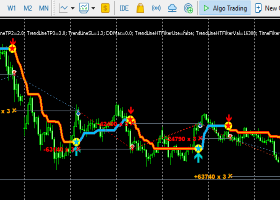Pound Sterling and the US Dollar are poised to see better levels in 2017 while the Euro is kept capped by ECB activity. Commodity Dollars such as the Australian, Canadian and New Zealand Dollars should maintain recent trends.
Barclays have published their foreign exchange forecasts and viewpoints for 2017.
Here are the key takeaways and the projections table.
The Pound
The uncertainty over a hard Brexit has weighed on the GBP, which is trading at a significant discount to its fair value.
While sterling’s medium-term value is extremely compelling, there is a strong incentive for buyers of long-term UK investments to wait for the government to announce its Brexit negotiation plans.
This leaves the GBP exposed to further “flash crashes”, particularly in periods of illiquidity, as important constitutional questions regarding the government’s path to trigger Article 50 remain in question.
On the contrary, short positioning should limit the ability ofGBPto extend significantly lower, while the currency appears now to be a beneficiary, rather than a victim, of politics of rage as a safe haven from euro area political and redenomination risks. We expect EURGBP to depreciate to 0.80 by Q2 17 before reaching 0.76 by year-end 17.
(EUR/GBP at 0.80 = GBP/EUR at 1.25 and 0.76 = 1.3158).
Copy signals, Trade and Earn $ on Forex4you - https://www.share4you.com/en/?affid=0fd9105
Euro
No currency is more exposed to both core rates steepening and the politics of rage than the EUR. We look for further near-term EUR weakness towards 1.05 in Q4, in the lead-up to the Italian referendum, as
markets begin to price into the EUR a risk of an EMU-threatening event in the next year.
The main driver of the EUR trend will likely be the ECB, with two-sided risks for the path of the single currency.
A miscommunication of the message that tapering is not tightening, in the context of poor euro area investment and inflation, will likely be seen as a policy mistake and result in material EUR depreciation, while further euro area resilience adds upside risks to our projected EUR path.
Under our base case, the ECB announces tapering in March but is effective in communicating that it retains the power to reflate the economy, keeping a gentle but sustained downward trend in EURUSD. Factoring the above, we forecast EURUSD at 1.01 by Q2 17 and 0.99 by year-end 17.
US Dollar
We expect the USD to strengthen in the year to come particularly vis-à-vis EM currencies. Potential anti-immigration and anti-trade policies in the US undoubtedly would not bode well for the developing economies, while the EUR could suffer as political risk premia increase towards the heavy political agenda next year.
The USD will likely lose ground versus the JPY, as Japan seems isolated from the antiglobalisation, anti-establishment global policy shift.
The Canadian Dollar
We expect a front-loaded depreciation of the loonie (USDCAD: 1.37 in Q4 16), with some moderation by he end of 2017 (to 1.42).
We expect Canada to be less affected than Mexico by the possible imposition of US anti-globalization policies, including renegotiating or rescinding NAFTA, but indirect effects may be greater than many realize, and uncertainty surrounding Trump’s policy choices is likely to weigh on the CAD.
Monetary policy divergence and widening interest rate differentials are likely to weigh on the loonie as well, since we continue to expect the BoC to stay on hold for the foreseeable future, although the risk is for additional easing. Oil prices could offer some support next year as the market slowly rebalances.
On the other hand, a fiscal expansion in the US that relies heavily on infrastructure spending can improve US
growth and increase the demand for Canadian exports (particularly raw materials), absent any significant restriction to bilateral trade. In that case, the CAD could be better supported coming into 2018, allowing for appropriate policy lags.
The Australian Dollar
The outlook for the AUD under global political risks and the steepening of core yield curves is mixed.
Australia’s education and tourism industries are helping to stave off the effects of the ‘Dutch disease’ as the economy continues to transition from resource dependency. Terms of trade have risen, and while this likely has not yet had a significant effect on the AUD, Australian government bonds are potential beneficiaries of reserve diversification as political uncertainty in the US and Europe arises from the politics of rage.
However, sources of depreciation remain. Against a backdrop of still-significant overvaluation, missingflation is a growing problem and we expect a resumption of slowing in Chinese growth with downside risks. Amid these offsetting forces, we have flattened the path of AUDUSD depreciation.
New Zealand Dollar
The outlook for the NZD under the potential anti-globalization, anti-establishment political shift in DM and steepening yield curves is mixed. Terms of trade have risen and New Zealand's immigration and building boom are helping to stave off the effect of ‘Dutch disease’ as the economy continues to transition from resource dependency.
However, sources of depreciation remain. Against a backdrop of still-significant overvaluation, missingflation is a growing problem and we expect a resumption of slowing in Chinese growth with downside risks.
The RBNZ continues to express its discontent with the high level of the NZD and its November Monetary Policy press conference did not rule out FX intervention or another rate cut.
Amid these offsetting forces, we have flattened the path of NZDUSD depreciation.
South African Rand
The recent reversal of capital inflows, heightened US rate hike expectations and local downgrade risks suggest that ZAR bulls are likely to book profits into year-end. Although South Africa’s improved terms of trade should limit the pace of depreciation, ongoing domestic political tensions could weigh on the currency.
An expected departure of either the finance minster or president prior to the December 2017 ANC electoral conference remains a fat tail risk. We forecast USDZAR at 15.20 at end-2016 and 15.75 by end-2017.



